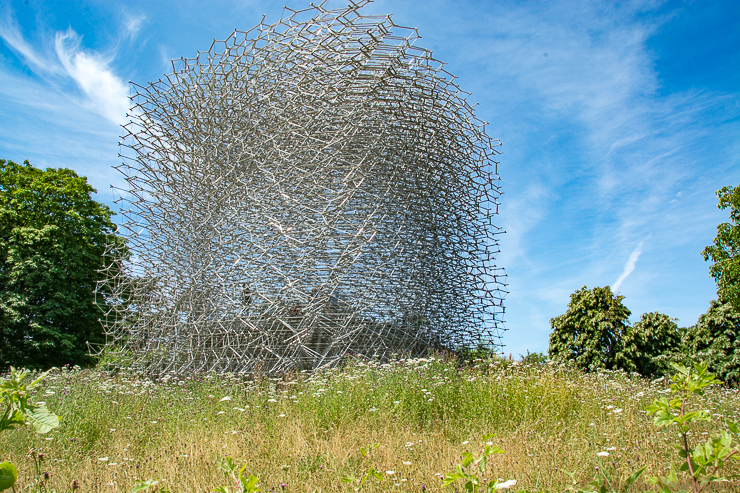
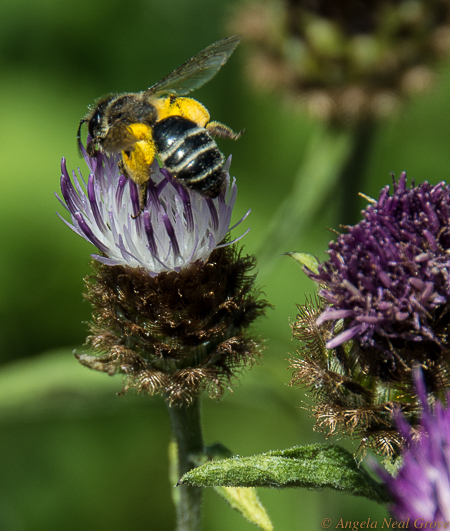
From Feeding The Planet Expo 2015
To stand in The Hive at Kew Gardens, London, is to be transported into the world of honeybees. This surreal silver lattice immersive installation stands 55-feet tall and is surrounded by a meadow of English wildflowers where bees busily collect pollen.
The sculpture was created by Nottingham based artist Wolfgang Buttress. for the UK Pavilion at the 2015 Milan Expo where the theme was feeding the planet. The Hive was an ode to honeybees and their plight.
Buttress won the Expo’s gold medal for best pavilion at the event.
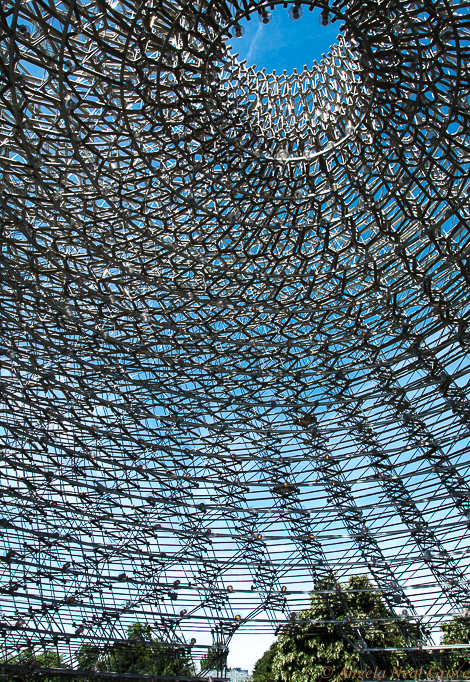
Inside The Hive
The Hive was relocated from Milan and now has a permanent home in The Royal Botanic Garden. It stands among the rare trees and ornate Victorian glasshouses – a gleaming kaleidoscopic beacon focusing the spotlight on the life and plight of honeybees.
The multi award-winning Hive was inspired by scientific research into the health of honeybees. It is a visual symbol of the pollinators’ role in feeding the planet and the challenges facing bees today.
Paths lead to the structure through the wildflowers. Once inside you are in a world of low humming sounds and a thousand flickering LED lights.
It is the sound and world of honeybees. The tempo of the music and intensity of lighting are triggered by real-time activity in a nearby hives connected to the sculpture.
Software Sound and Light
Between 40,000 – 60,000 bees live in the Kew Gardens hives. Accelerometers in the hives measure vibrations which show if the bees are active, healthy and quiet, or if they are about to swarm. These signals are passed through software which precipitates sounds heard in The Hive.
The soft flashing pink LED lights on the lattice frame individually respond to movement in the hive.
The intensity of the sounds and light change constantly, echoing life in a the real beehive. To me the sounds and glow from the lights made the industrial-looking sculpture come to life and seem almost magical.
Serious Buzz
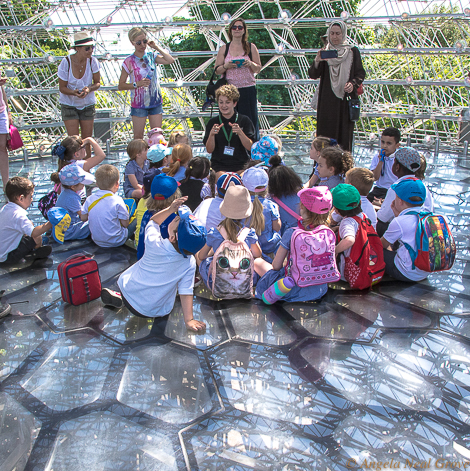
The original inspiration for The Hive was to focus the spotlight on honeybees and their plight, and at Kew it does just that. Education is an integral part of the installation.
There are guides, excellent signage and when I was there excited groups of schoolchildren sitting on the floor with its hexagonal glass panels.
Children learn the importance and value of honeybees to our food supply and how they can help by planting just one or two pollinator friendly plants.
One third of the world’s food supply depends on bees, Since 193o’s England has lost 97% of its wild flower meadows. Pesticides and modern farming methods have contributed to the drop of 50% in the world population of honeybees from 1945 to 2007.
In China workers are trucked in at blossom time to fertilize trees by hand, using brushes because there are no bees to do the work. In the Central Valley of California beehives with colonies are brought into orchards at critical almond blossom time.
On Earth Day it is clear honeybees are essential to our food supply and need our help.
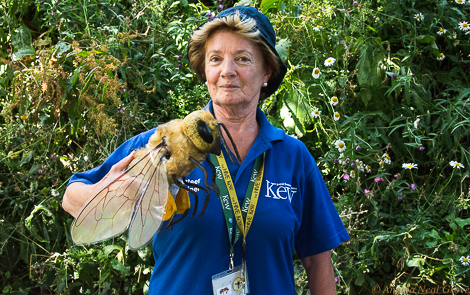
How to visit The Hive; How to help Honeybees.
Visit: The Hive is open for everyone visiting The Royal Botanic Gardens at Kew. Hours are 10:00 am – 7:00 pm daily. To reach the gardens it is an easy 20 minute ride by underground train and five minute walk from central London. There are also riverboats which leave from Westminster Pier by the Houses of Parliament.
Listen to Dr. Marla Spivak’s Ted Talk on “Why Bees are disappearing”. She is a renowned entomologist and Distinguished McKnight University Professor at the University of Minnesota.
Plant a few bee/pollinator friendly flowers. Even a few plants in a window box for urban dwellers can make a difference.
Watch honeybees work in your garden, park or nearest green plot
Support beehives on roofs of buildings like the Whitney Museum and Waldorf Astoria Hotel in New York City.
Shop at the local farmers market for organic produce grown without pesticides.
Happy Earth Day 2018!
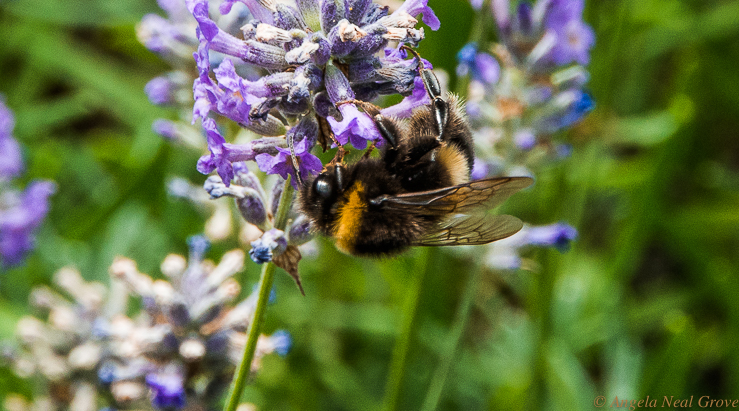
The multi award-winning Hive was inspired by scientific research into the health of honeybees. It is a visual symbol of the pollinators’ role in feeding the planet and the challenges facing bees today.